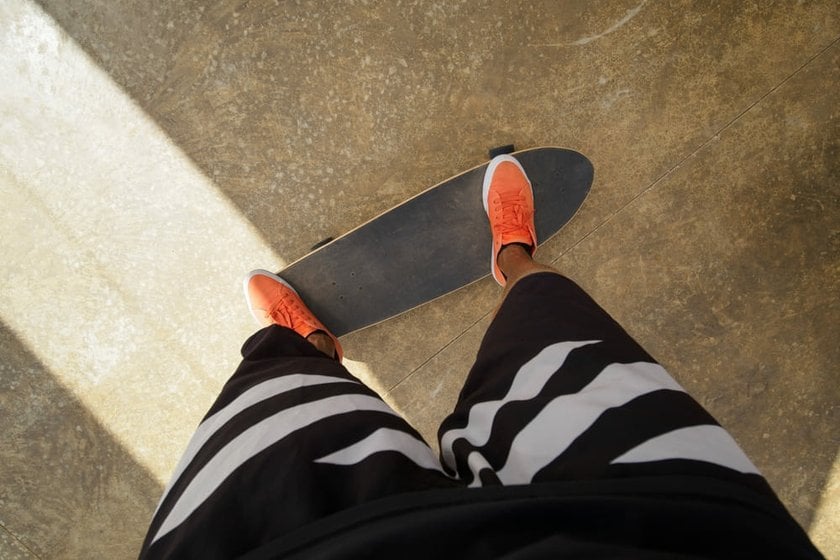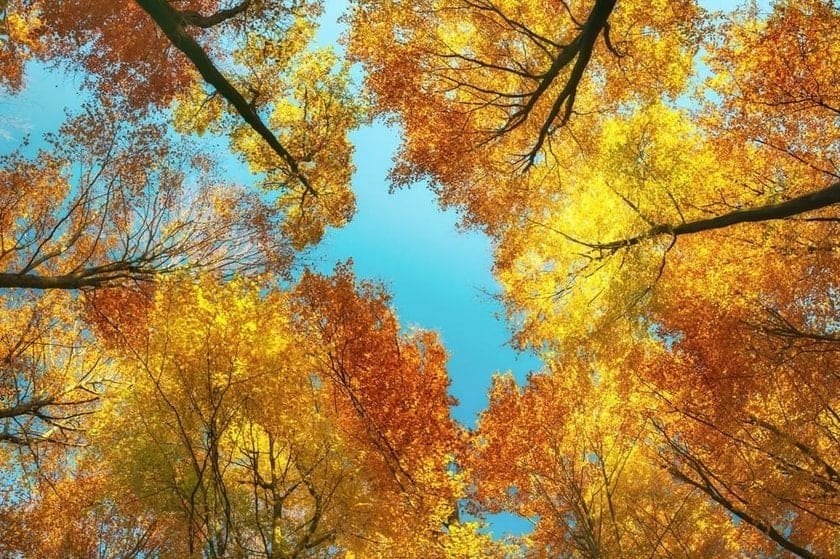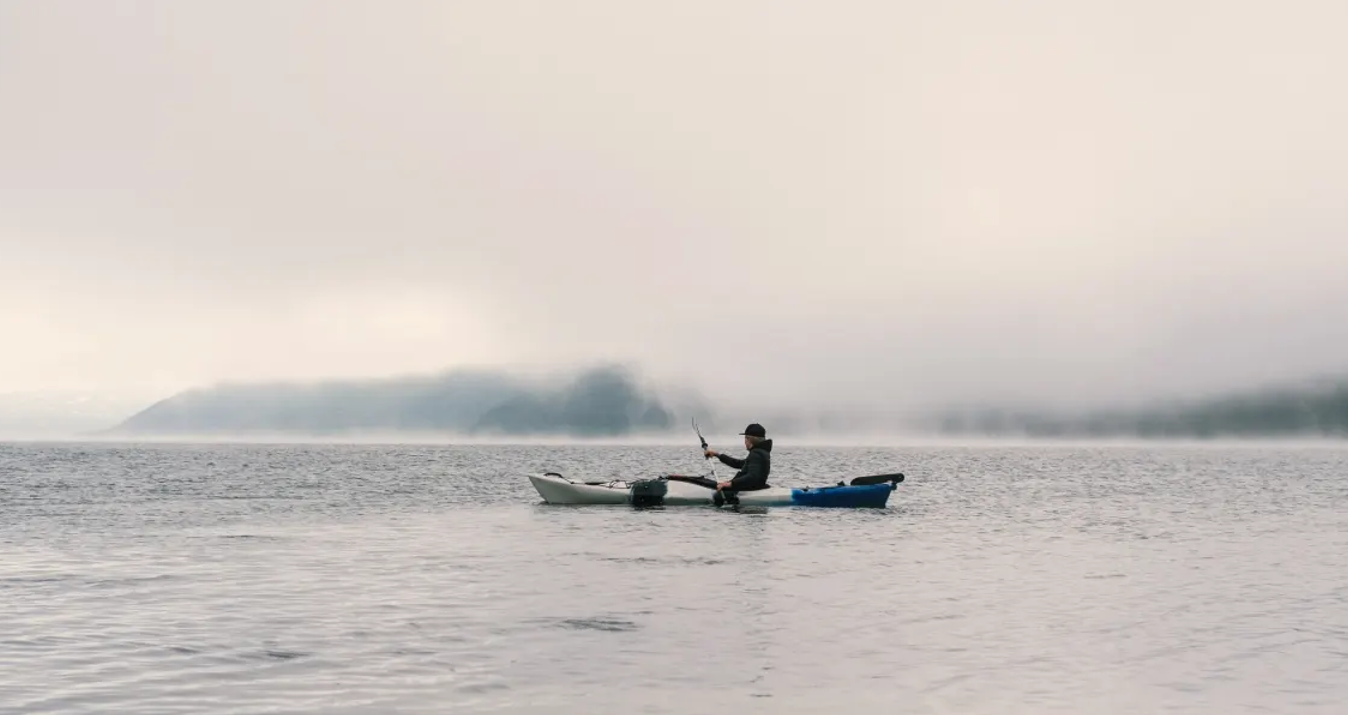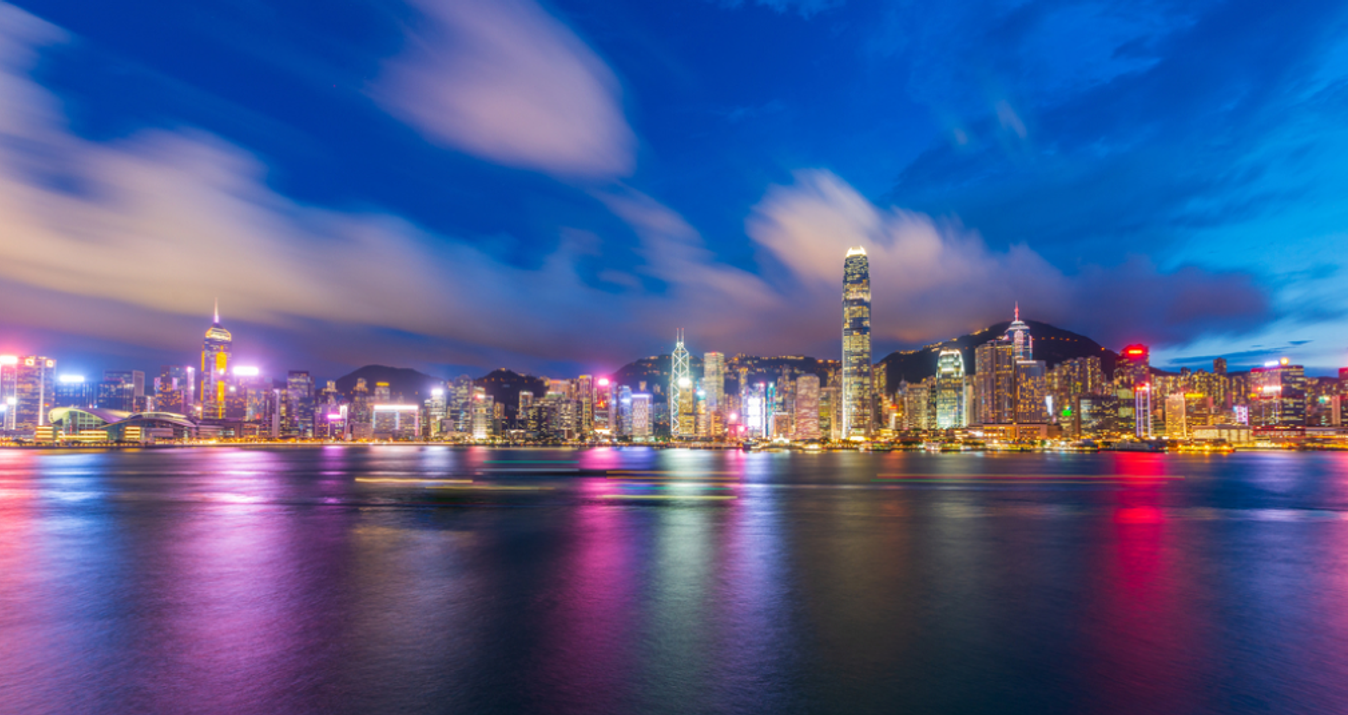Angle In Photography: The Magic Of Perspective In Photography
October 25, 2024

Master all types of camera angles to make your photos more attractive and extraordinary. Today, in our blog, we will discuss how you can improve your skills by applying approaches from different perspectives.
Different angles in photography allow you to convey the same story differently, shifting emphasis. Different perspectives add majesty or diminish the same object. Having mastered the basic shooting techniques from various angles, even a beginner can achieve a professional look in his pictures. Depending on the angle from which the object is photographed and its location in image (center, corner), the viewer will understand the main idea differently. It's great when you can bring your vision to an audience!
We will provide useful information about different perspectives in photography and how to correctly apply camera angle types in practice. Let's determine the most popular photography angles and techniques and how you can improve your photography skills.
Don’t feel like reading the whole breakdown? We’ve pulled together a quick summary below.
Key Takeaways
Camera angles define how your story feels. The same subject can look powerful, gentle, or mysterious depending on the camera’s position.
Understanding perspective is key. Low angles add dominance, while high or bird’s-eye views reveal context and vulnerability.
Mastering basic shot types builds strong visual storytelling. From long shots to close-ups, each angle serves a purpose—mood, emotion, or scale.
Experimentation improves creativity. Try different viewpoints—knee-level, hip-level, Dutch tilt—to discover new compositions and effects.
Lighting and balance matter. Combine the right angle with natural or soft light to emphasize shape, depth, and texture.
Editing refines your results. Use tools like Luminar Neo to enhance clarity, correct distortion, and unify tones without losing natural feel.
Understanding Camera Angles and Why It's Important for a Photo
Angle in photography means camera position relative to subject. The position directly affects the final image result. Shooting angle determines overall perspective, an object's appearance, its proportions, and its interaction with the background.
Shooting angles are important because they help the photographer direct the viewer's attention to the elements he needs, emphasize certain details, or create dramatic effects. For example, shooting from a low angle can make a subject appear larger and more impressive while shooting from above can give an image a sense of vulnerability or diminish the subject's importance.
Also read: What Is a JPEG Format? How to Open JPEG On Any Device
Best Camera Angles
An angle is a main aspect that greatly influences an image's outcome. It refers to the position from which photographs concerning the subject are taken. Different camera angles create various visual effects and evoke diverse emotions in your audience. Understanding the magic of perspective in photography can elevate the quality and demand of your photos.
Next, we will consider some common types of angles in photography and their effects on shots. To find out what perspective suits what, we are talking about camera angle examples that you can use to improve your skills:
1. Long Shot (Establishing Shot)
2. Medium Shot (Medium Close-Up)
3. Close-Up Shot (Extreme Close-Up)
4. Point of View Shot (POV)
5. Cowboy Angle
6. Hip Level Shot
7. Knee Level Shot
8. Tracking Shot (Truck Shot)
9. Shoulder Level Shot
10. Telephoto Perspective (Zoom Shot)
11. Macro Perspective
12. Wide-Angle Perspective
13. Dutch Angle (Tilted Shot)
14. Low Angle
15. Worm's Eye View
16. High Angle
17. Bird's Eye View
18. Eye-Level Shot
19. Pedestal Shot
1. Long Shot (Establishing Shot)
 The long shot shows the object at full height and its surroundings. It is often used to set the scene or setting of the action, showing context and scale to the viewer. Such a frame helps to understand the characters' interaction with their environment and can create a sense of distance or isolation.
The long shot shows the object at full height and its surroundings. It is often used to set the scene or setting of the action, showing context and scale to the viewer. Such a frame helps to understand the characters' interaction with their environment and can create a sense of distance or isolation.
An establishing shot is often used in filmography to show large spaces or important locations, such as at the beginning of a film or a scene. In photography, such a shot can show a model or an object in the middle of the environment, emphasizing the scale of the space.
2. Medium Shot (Medium Close-Up)
 It captures the subject from the waist up, focusing on the character and their emotions while leaving some of the background in the frame. It is a universal frame that conveys both feelings and context simultaneously. The medium shot provides a balanced view of the subject and its surroundings.
It captures the subject from the waist up, focusing on the character and their emotions while leaving some of the background in the frame. It is a universal frame that conveys both feelings and context simultaneously. The medium shot provides a balanced view of the subject and its surroundings.
Such a plan often creates an interaction between two persons and emphasizes their emotions and gestures. It can also portray persons in action when the background is still important.
3. Close-Up Shot (Extreme Close-Up)
 An extreme close-up focuses on details such as the eyes, lips, or other small parts of the subject and has a strong emotional or symbolic impact. It allows the viewer to see the smallest details that are not visible in wider shots. Use close-ups to increase tension or create a deep emotional connection with the character.
An extreme close-up focuses on details such as the eyes, lips, or other small parts of the subject and has a strong emotional or symbolic impact. It allows the viewer to see the smallest details that are not visible in wider shots. Use close-ups to increase tension or create a deep emotional connection with the character.
While extreme close-ups in films are often used in thrillers or psychological dramas to heighten emotional tension, close-up approach can also capture details of nature, such as water drops on petals or skin texture, in photography.
4. Point of View Shot (POV)

A POV shot reflects what the character sees, allowing viewers to feel in their role. Use it to make a special emotional connection with the character and give an interactive feeling, like the viewer is directly involved in the events. POV shots are used to show the character's perspective and experience.
POV shooting is often used in action scenes, where the viewer sees events from the character's point of view, for example, shot from the car’s cockpit on the road. The angle depicts a first-person view, such as a person looking at their hands or an instrument in front of them.
5. Cowboy Angle
 Cowboy angle gets its name from Westerns, where the camera is positioned to show the character from the knees to the head. It shows the figure or other important objects in the lower frame’s part. Used to emphasize action or balance between a character's personal space and their movements.
Cowboy angle gets its name from Westerns, where the camera is positioned to show the character from the knees to the head. It shows the figure or other important objects in the lower frame’s part. Used to emphasize action or balance between a character's personal space and their movements.
Even though it came to us from the cinema, everyday scenes, such as people holding something in their hands, are filmed with cowboy angles.
6. Hip Level Shot
 In a hip-level angle, the camera is positioned at the character's hips, often used to emphasize movement. It allows the viewer to focus on the action in the middle of the frame. This angle is often used in action scenes or tense situations. In photography, such a frame is used to shoot scenes where dynamic body movements are important, such as sports or dancing.
In a hip-level angle, the camera is positioned at the character's hips, often used to emphasize movement. It allows the viewer to focus on the action in the middle of the frame. This angle is often used in action scenes or tense situations. In photography, such a frame is used to shoot scenes where dynamic body movements are important, such as sports or dancing.
7. Knee Level Shot
 Knee-level shots are shot from knee height and emphasize actions on the ground or below the character's average level. The angle can create a sense of dynamism and danger or make the shot more dramatic. It is also used to focus attention on the feet or the environment.
Knee-level shots are shot from knee height and emphasize actions on the ground or below the character's average level. The angle can create a sense of dynamism and danger or make the shot more dramatic. It is also used to focus attention on the feet or the environment.
A level Shot is good for showing action or scenes with movement from below, such as when the character is walking through difficult terrain or during a battle. In photography, it is often used to capture animals or children to emphasize their perspective.
8. Tracking Shot (Truck Shot)
 A tracking shot involves the camera's movement, which follows a character or object, keeping it in the center of the frame. It allows the viewer to "go along" with the object, creating a sense of movement and continuity in the scene. In movies, it creates a sense of immersion when the viewer follows the events continuously. Use it in reportage or sports photography when it is important to convey movement and dynamics.
A tracking shot involves the camera's movement, which follows a character or object, keeping it in the center of the frame. It allows the viewer to "go along" with the object, creating a sense of movement and continuity in the scene. In movies, it creates a sense of immersion when the viewer follows the events continuously. Use it in reportage or sports photography when it is important to convey movement and dynamics.
9. Shoulder Level Shot
 The camera is located at the level of the character's shoulders, which allows you to focus on the face and expressions of emotions while preserving part of the surrounding space. Shoulder-level shots are ideal for dialogue or portrait scenes where the character and his interaction with other people or objects in the frame are important. They are suitable for conveying characters' faces and their reactions. Simply put, they are a regular portrait shot focusing on the upper body and face, emphasizing emotion.
The camera is located at the level of the character's shoulders, which allows you to focus on the face and expressions of emotions while preserving part of the surrounding space. Shoulder-level shots are ideal for dialogue or portrait scenes where the character and his interaction with other people or objects in the frame are important. They are suitable for conveying characters' faces and their reactions. Simply put, they are a regular portrait shot focusing on the upper body and face, emphasizing emotion.
10. Zoom Shot (Telephoto Perspective)
 With telephoto lenses, distant objects seem closer together, making special visual effects. You can safely photograph birds, wild animals, and other creatures in their natural habitat without intruding on their behavior. Use them to capture architecture from a distance in travel, avoiding crowds or obstructions. These lenses help you capture sports events, parades, ceremonies, and street photography. They are excellent for capturing small details in nature, such as flowers and leaves.
With telephoto lenses, distant objects seem closer together, making special visual effects. You can safely photograph birds, wild animals, and other creatures in their natural habitat without intruding on their behavior. Use them to capture architecture from a distance in travel, avoiding crowds or obstructions. These lenses help you capture sports events, parades, ceremonies, and street photography. They are excellent for capturing small details in nature, such as flowers and leaves.
You could need a tripod or image stabilization in the lens or camera to ensure sharp images, as these lenses, due to their longer focal lengths, have the potential for camera shake.
You can also create reflective panoramas using zoom shots and Luminar Neo's Panorama Stitching features. These features allow you to easily combine multiple images into one panorama, creating new perspectives.
11. Macro Perspective
 Macro photography involves extremely small subject close-ups, revealing intricate details often unseen by the naked eye. It's commonly used for photographing insects, flowers, or other tiny objects. Macro perspective may need additional equipment or lenses, but amateur macro photos are taken even with a phone. In addition, macro shooting combines with other angles from this list. For example, photograph butterflies directly, above, below, or in motion. Insects, dew drops, flower structures, and trees look incredible in the frame under the macro lens. Depict an amazing tiny world.
Macro photography involves extremely small subject close-ups, revealing intricate details often unseen by the naked eye. It's commonly used for photographing insects, flowers, or other tiny objects. Macro perspective may need additional equipment or lenses, but amateur macro photos are taken even with a phone. In addition, macro shooting combines with other angles from this list. For example, photograph butterflies directly, above, below, or in motion. Insects, dew drops, flower structures, and trees look incredible in the frame under the macro lens. Depict an amazing tiny world.
The Super Sharp AI tool from Luminar Neo will help you make macro shots clear and focused. You can add more details to your shots and save those that are out of focus.
12. Wide-Angle Perspective
 Wide-angle lenses capture a broader view, making objects closer to the camera appear larger while distorting edges. They are great for capturing vast landscapes or emphasizing a subject's surroundings. When photographing buildings and interior spaces, wide-angle lenses help capture more of the scene without stepping back too far. Wide-angle is useful for catching action shots or sports events where you want to show the subject in motion while providing context and capturing street scenes, crowded markets, and urban environments. In underwater photography, where distances may appear larger than they are, wide-angle lenses help capture marine life and the surrounding environment in one frame.
Wide-angle lenses capture a broader view, making objects closer to the camera appear larger while distorting edges. They are great for capturing vast landscapes or emphasizing a subject's surroundings. When photographing buildings and interior spaces, wide-angle lenses help capture more of the scene without stepping back too far. Wide-angle is useful for catching action shots or sports events where you want to show the subject in motion while providing context and capturing street scenes, crowded markets, and urban environments. In underwater photography, where distances may appear larger than they are, wide-angle lenses help capture marine life and the surrounding environment in one frame.
Experimenting with different focal lengths and perspectives is always a good idea to find the best approach for your desired outcome. However, wide-angle can distort facial features if used at close distances. Choosing a wide-angle lens depends on your artistic vision and specific requirements of the scene or subject you photograph.
13. Dutch Angle (Tilted Shot)
 A tilted Shot is an angle in which the camera is tilted, creating a diagonal line of the horizon in the frame. Such an expansion angle makes the viewer feel disorientated, tense, or unstable. Movies often use it to emphasize a character's anxiety, chaos, or internal conflict. In photography, the Dutch Angle can be used for dynamic and dramatic shots, such as scenes with a field trip or during a festival, to convey a sense of energy or instability. This technique is also often used for experimental portraits or urban photography, where breaking the usual symmetry of the frame is important.
A tilted Shot is an angle in which the camera is tilted, creating a diagonal line of the horizon in the frame. Such an expansion angle makes the viewer feel disorientated, tense, or unstable. Movies often use it to emphasize a character's anxiety, chaos, or internal conflict. In photography, the Dutch Angle can be used for dynamic and dramatic shots, such as scenes with a field trip or during a festival, to convey a sense of energy or instability. This technique is also often used for experimental portraits or urban photography, where breaking the usual symmetry of the frame is important.
14. Low Angle
 It is the perspective from which the subject appears larger, dominant, and powerful. Whether we like it or not, this is how our brain perceives information. A low angle is usually used in sports or political photography. Shooting your pet from a low angle will add majesty, courage, and aristocracy.
It is the perspective from which the subject appears larger, dominant, and powerful. Whether we like it or not, this is how our brain perceives information. A low angle is usually used in sports or political photography. Shooting your pet from a low angle will add majesty, courage, and aristocracy.
15. Worm's Eye View

Worm's eye view is one of the most unusual photography angles of view. Another name you may find is “bug's-eye view.” Imagine yourself as an ant. Most objects around are not just gigantic; they are located above you. So, the worm's eye view works the same as it sounds. Captured from ground level, looking up at the subject makes it appear larger and unique. Shoot children or adult models on a playground or training ground with horizontal bars and ladders. Photograph certain architectural objects and water drops on plant leaves, clouds, an airplane in the air, and even a jumping dog.
It is ideal for macro forest flora photography. Learn more about using worm's eye view shooting in our article on Mushroom Photography.
16. High Angle
 On the contrary, shooting from a high angle and looking down at your models make them appear smaller, weaker, or more vulnerable. It's commonly used to show a subject's relationship with its surroundings or create a unique viewpoint. This perspective adds casualness and childishness to characters. Pets are often photographed this way because they seem cuter when they look at you through a camera with big eyes. Shooting food, drink, plants, and insects is usually done from a high angle, although the next one is more telling.
On the contrary, shooting from a high angle and looking down at your models make them appear smaller, weaker, or more vulnerable. It's commonly used to show a subject's relationship with its surroundings or create a unique viewpoint. This perspective adds casualness and childishness to characters. Pets are often photographed this way because they seem cuter when they look at you through a camera with big eyes. Shooting food, drink, plants, and insects is usually done from a high angle, although the next one is more telling.
17. Bird's Eye View
 This angle differs because it captures from a very high vantage point as if you were a bird looking down on scene. It offers a comprehensive view of the subject's environment and is used to depict patterns, landscapes, or architecture. Do not buy a drone or put a ladder over a model to take spectacular photos. From this position, take shots by climbing at least half your height above the object — the main thing is to keep the camera perpendicular to the surface so that object shapes are not distorted. The bird's eye view angle is perfect for shooting food, still-life arrangements, or objective shooting on a table.
This angle differs because it captures from a very high vantage point as if you were a bird looking down on scene. It offers a comprehensive view of the subject's environment and is used to depict patterns, landscapes, or architecture. Do not buy a drone or put a ladder over a model to take spectacular photos. From this position, take shots by climbing at least half your height above the object — the main thing is to keep the camera perpendicular to the surface so that object shapes are not distorted. The bird's eye view angle is perfect for shooting food, still-life arrangements, or objective shooting on a table.
If you have the opportunity to shoot from a drone, then definitely try Luminar Neo as a Drone Photography Editor. Automatic image editing is perfect for this particular shooting type. You will be pleasantly surprised by the editor's capabilities and ease of operation.
18. Eye-Level Shot
 You could find another name — “face-to-face,” but it is about the same thing. It is the most common angle where the camera is positioned opposite the model's eyes. It is often used for portraits and is popular for street photography. Сapture flowers, put your camera on the level of its head and place it a few feet above the ground for landscape. It works perfectly with children and animals.
You could find another name — “face-to-face,” but it is about the same thing. It is the most common angle where the camera is positioned opposite the model's eyes. It is often used for portraits and is popular for street photography. Сapture flowers, put your camera on the level of its head and place it a few feet above the ground for landscape. It works perfectly with children and animals.
19. Pedestal Shot
 Pedestal shot is one of those photo angle names that speak for themselves. It involves the camera's vertical movement, which rises or falls, keeping the subject in the frame center. Such movements emphasize an object's grandeur or show an important detail from above or below. Such movements reveal new scene elements or change space perception.
Pedestal shot is one of those photo angle names that speak for themselves. It involves the camera's vertical movement, which rises or falls, keeping the subject in the frame center. Such movements emphasize an object's grandeur or show an important detail from above or below. Such movements reveal new scene elements or change space perception.
A pedestal shot is good for photographing architecture or statues. It is also useful when shooting tall objects to show their scale and structure.
The Bottom line
We can talk for hours about camera angles in photography and their features. There are so many of them that trying them all at once is impossible. Each picture with the same subject may have a different meaning. You can create a masterpiece from any simple phenomenon. Also, depending on the angle, you can easily emphasize the favorable model sides.
To master all the above information, take the camera in your hands and try to find the best camera angles you like. By experimenting, you can create unique and engaging photographs that tell compelling stories and grab the viewer's attention. The magic of perspective lies in the photographer's skill in using different angles creatively to share their vision effectively.
The camera shot focuses the viewer's attention on specific things. Show people the world through your eyes and how you see its features and details. Experiment with angles to take pictures; you will get an unforgettable new experience and pleasure. We wish you only successful and extraordinary photos!





